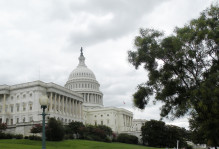Beijing Blog Part 8: The remains of colonialism
June 8, 2009-(“The Bund” -Puxi, Shanghai)
If you walk or take a taxi along the Suzhou River down to where it intersects with the Huangpu River, you’ll immediately come across the last remnants of semi-colonialism in China. And it isn’t found in souvenir shops or restaurants or people dressed like 19th century Caucasians (though there are a lot of those here), but the last remnants remain in the architecture of these historic buildings.
This is “The Bund”.
Back in the 19th century, when China was in a state of semi-colonialism, this was embassy row. Each building among The Bund used to represent a different country that had taken a slice of what had then been China. As this is the case, each building is also significantly different from one another, and they all represent western style architecture which contrasts with the traditional Chinese shikumen architecture that is so commonly found throughout the city.
However, where once flew the national flags of countries such as Great Britain, France, and Germany, today, only rows upon rows of red Chinese flags fly atop the long-forgotten buildings of The Bund. Perhaps, it’s a nationalistic symbolization that China no longer answers to these long-lost imperial powers. Today, each building also belongs to a specific bank of China. The Bank of China, Agricultural Bank of China, Chinese Evergreen Bank, and ICBC all own and operate branches within buildings on The Bund.
Shanghai is interesting in that the Huangpu River represents two completely different sides of the 20-million strong Chinese city. On one side, is Puxi and The Bund, the historical remains of what Shanghai once represented to the world. On the other, is Pudong and the Oriental Pearl, the continuing construction on what Shanghai will become and what it holds for the future. The river itself seems to represent the present, ever flowing human society.
Perhaps seeing the past and the future at the same time, and realizing the intense symbolism behind this spectacular view, is part of what draws people to this amazing city every year. And perhaps, just perhaps, Shanghai itself is trying to tell us to be more like the constantly flowing Huangpu, and always build on into the future, yet always remember the past.




No comments.
Comments are currently closed. Comments are closed on all posts older than one year, and for those in our archive.